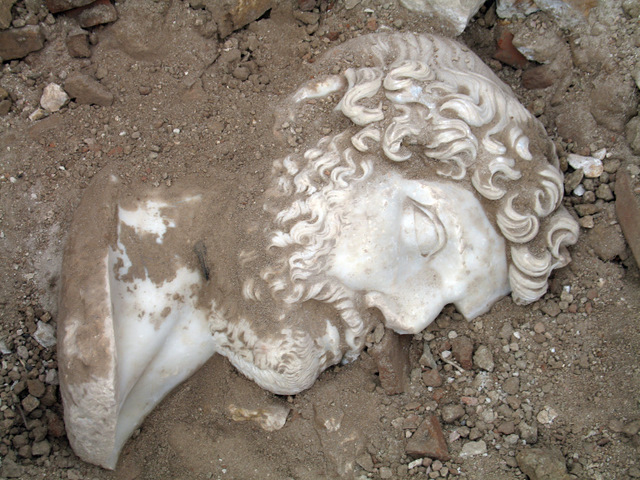Statue of Hadrian, c. 117 BCE
The discovery was made by archaeologists from the Katholieke Universiteit Leuven (Belgium), who, under Waelkens’ direction, have been investigating the site since 1990. Last month a new excavation campaign started, and the Belgians resumed work at the Roman Bath, focusing on the southeastern corner of the complex.
On Sunday the first fragments of a over life-size statue, a foot and part of a leg, were unearthed. The foot is 31.5 inches (0.80 meters) long; the leg, from just above the knee to the ankle, is nearly five feet (1.5 meters). The elaborate sandal depicted on the footed indicated to the archaeologists that the fragments were from the statue of an emperor. On Monday, the almost intact head of the statue was discovered, revealing that the statue was of Hadrian, who ruled from A.D. 117 to 138. The head measures more than 27 inches (0.70 meters).
Construction of the bath complex in Sagalassos was started during Hadrian’s reign, though the building was finished only several decades later. The bath complex is one of several major building projects at Sagalassos that can be dated to the time of Hadrian and the city had a sanctuary of the imperial cult dedicated to Hadrian and his successor Antoninus Pius.
The statue probably dates from the beginning of Hadrian’s rule.






